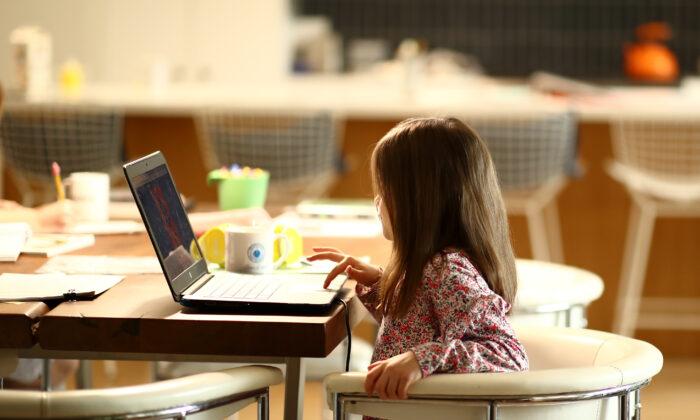WASHINGTON—President Donald Trump has been clear that he wants all schools to fully reopen in the fall, with any appropriate safety measures in place.
“We’re very much going to put pressure on governors and everybody else to open the schools,” Trump said during a White House roundtable with teachers, students, administrators, and health officials on July 7. “It’s very important for our country. It’s very important for the well-being of the student and the parents.”
In March, due to COVID-19 fears, 75 million students were sent out of classrooms and onto computers to resume learning from home. Teachers and administrators scrambled to find the best way to teach online and provide as much support as possible from afar.
“If we’ve learned one thing, the computer will never replace the campus,” Trump said.
Centers for Disease Control and Prevention Director Dr. Robert Redfield said his agency will work with state and local officials to help schools fully reopen in the fall.
“I think it’s worth noting that CDC never recommended general school closure throughout this pandemic,” Redfield said. “We see schools ... as a vital part of our society and we think as you measure the different risks, it’s clear that we would see the greater risk to our society is to have these schools closed.”
Florida Gov. Ron DeSantis announced on July 7 that all schools in his state are expected to reopen in-person classes in the fall.
Jeff Beardon, superintendent at Forsyth County Schools in Georgia, said his school system, which serves 52,000 students, will reopen on Aug. 6.
“We’re ready to go,” he said at the White House. “We’ve been planning and preparing all summer [and] we will have guidelines in place. Our students need to be back at school.”
Patrick Daly, principal of St. Vincent de Paul High School, in Sonoma County, California, said his school plans to fully reopen on Aug. 10.
The school will have two back-up plans in case adjustments are needed, including a hybrid at-school/at-home plan and a full distance-learning plan.
But, Daly said, distance learning isn’t beneficial to boys and girls aged 14 to 18. “And particularly I really feel for the parents of elementary school children, who are trying to work and provide for their families, and at the same time having to stay at home and teach. It’s very difficult, and I hear that a lot from our own elementary school,” he said.
A student from the same school, Cameron Vaughn, said “it really means a lot” to know students can get back to school and have something to look forward to.
“And it means a lot to our emotional health and our mental health just to be out there with our friends,” Vaughn said.
Nancy Aichholz, school board president of the Indian Hill School District in Ohio, said they’re actively preparing for a full reopening, but she’s concerned about overregulation.
“My biggest fear is that we will get everybody back, we'll get into a routine, and then because of regulations and mandates that we would have to close back down,” Aichholz said. “That would be a disruption on top of a disruption.”
The American Academy of Pediatrics (AAP) said the importance of in-person learning is well-documented and goes far beyond academic instruction, to include social and emotional skills, safety, reliable nutrition, and physical activity.
Evidence shows that children and adolescents haven’t been significantly affected by COVID-19 and that they’re less likely to be infected, show symptoms, and spread infection, according to Dr. Sally Goza, a pediatrician and AAP president. The vast majority of deaths have occurred in older adults and those with underlying health issues.
By the end of June, school-aged children accounted for 1.3 percent of all COVID-19 related hospitalizations, according to Brooke Rollins, acting director of the United States Domestic Policy Council.
Schools are now having to decide whether they will force students and teachers to wear masks, as well as how to handle social distancing, cafeteria crowds, hallways, lockers, playgrounds, and bus travel.





